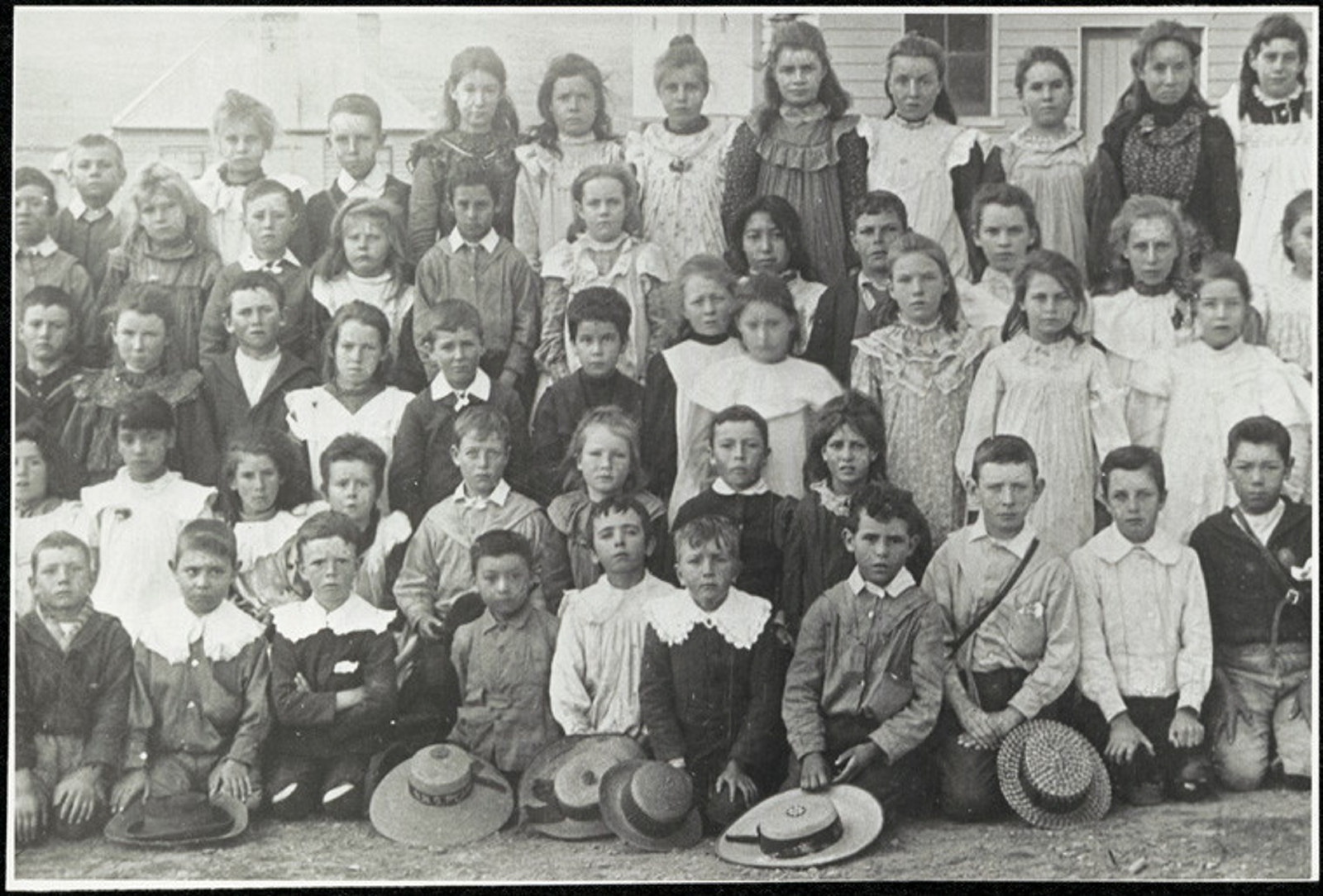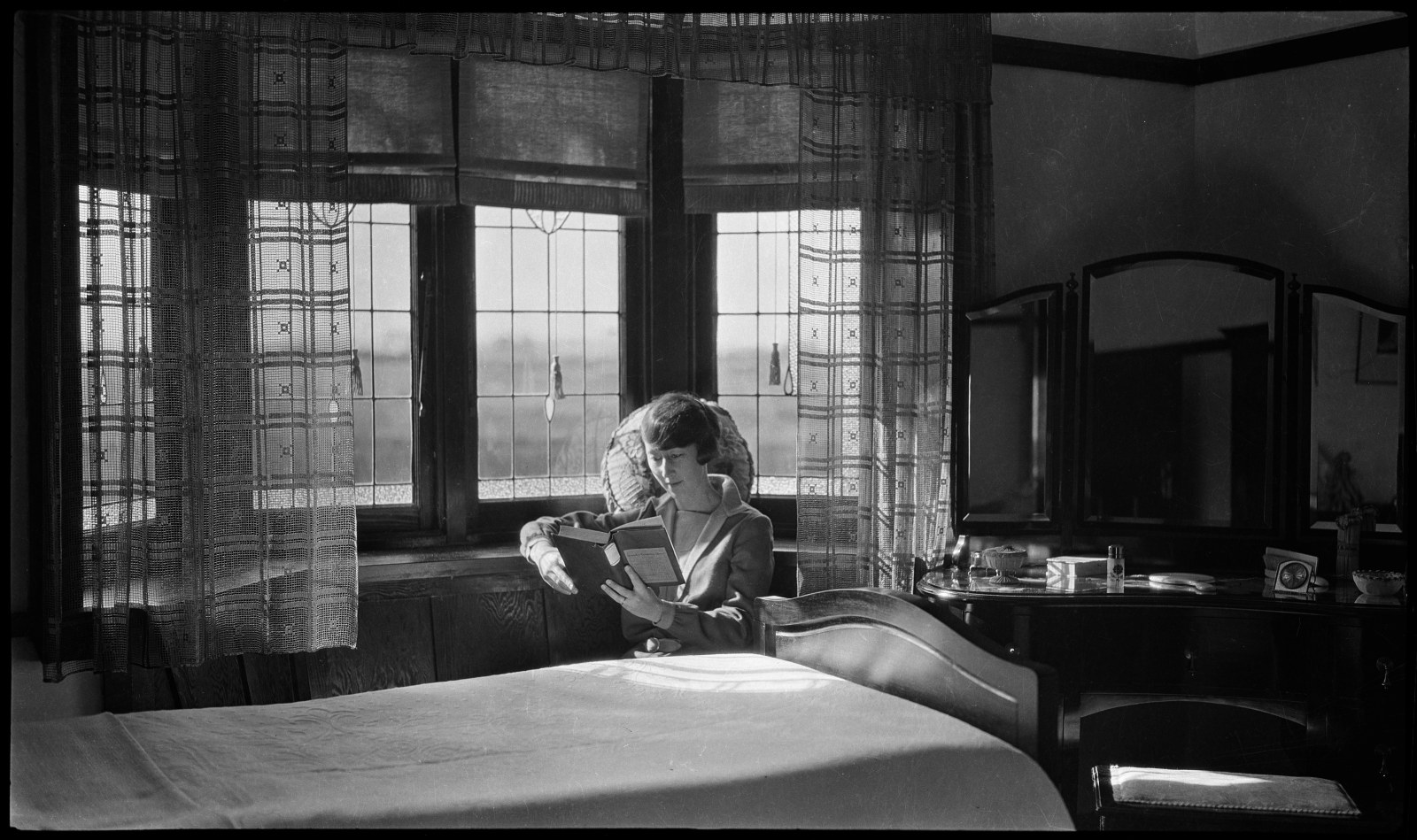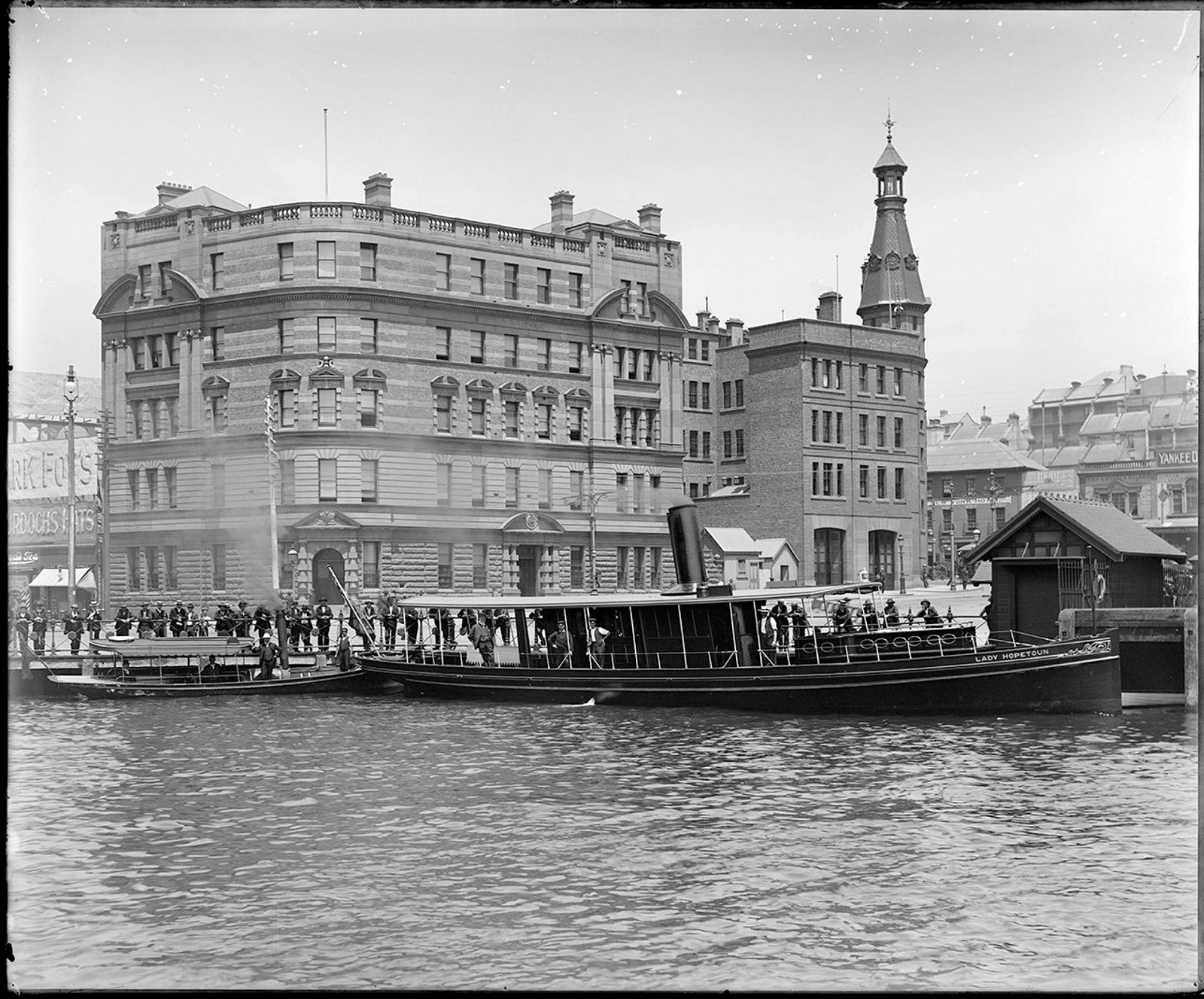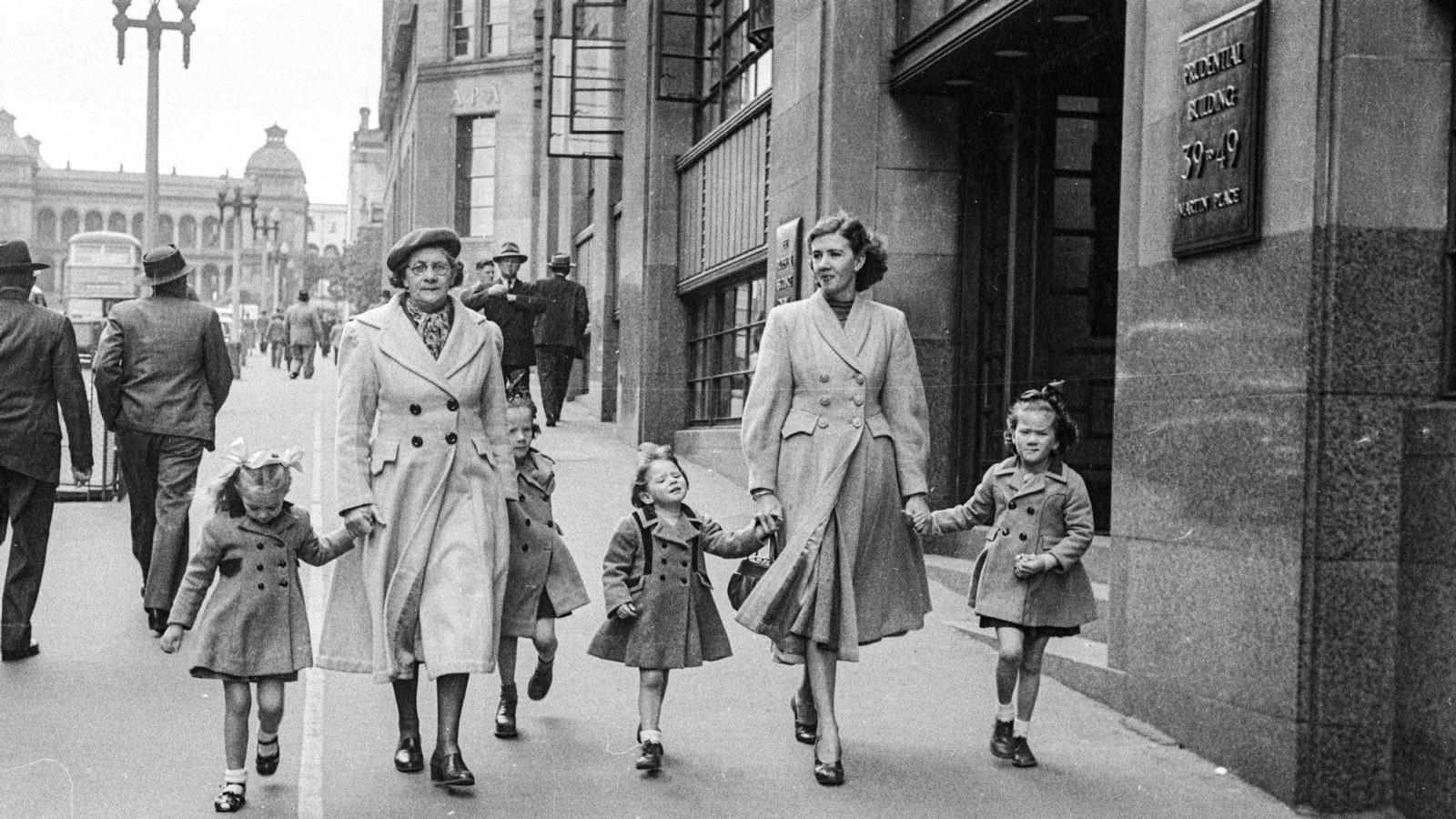Memories: a researcher finds their school photo in the collection
Finding a class photo
We love to hear your stories when you or your family appear in the archives. This story is from Kathleen, who was one of the little girls in this Kindergarten photo from Cooks Hill in 1951. Kathleen’s parents came from Rockhampton to live in Newcastle during the War. Her grandmother was worried about the ‘Brisbane Line’ – a proposal to concede the northern portion of Australia in the event of an invasion by the Japanese and later rejected by Prime Minister John Curtin and the Australian War Cabinet.
Kathleen’s family moved to Newcastle to be near her grandmother’s sisters and lived across the road from the Cooks Hill Public School. She attended the school between 1950 and 1953. Kathleen told us this photograph started her finding lots of memories, such as the children bringing beach buckets of coal to school to warm the classroom. In 1953 her other grandmother won the Queensland lottery Golden Casket. This win gave Kathleen’s parents the opportunity to move back to Rockhampton and settle.
Kathleen was delighted to come across this photograph as she doesn’t have many photos from her childhood.
We would like to thank Kathleen for sharing her story with us, and allowing us to share it with you.
About the school photo collection
School class photographs are usually taken by contractors and as such are not usually State Government archives. However, the History Unit of the Department of Education did collect photographs between 1963 and 1991. Most photographs show school buildings, pupils, teachers, or educational activities, with most including an identifying caption and date. The photographs themselves date from around 1850 to around 1991. These are part of our Collection and many dated earlier than 1955 can be viewed and downloaded from our catalogue. You can check if we hold photographs from your school days.
Search the catalogue by the series number NRS 15051 and the name of the school.
Published on
School records

School student records guide
These records provide information about the admission of children to Government Schools, Orphan Schools and Industrial Schools in NSW.
Photo collections
Browse all
House photo albums
These specially produced photograph albums (some in published form and others consisting of photographs pasted into an album) comprise images of one or more domestic dwellings and depict exteriors, interiors and gardens in NSW mostly from the late 19th to the early 20th centuries

Richard Stringer’s architectural photographs, 1968–2003
This portfolio contains 55 photo prints taken by architectural photographer Richard Stringer, dating from 1968 to 2003, documenting significant Australian domestic buildings

Barry Wollaston: historic buildings in the county of Cumberland (NSW), 1954
This collection consists of 232 photo negatives by architect and photographer Barry Wollaston of buildings in the Sydney region considered by the Royal Australian Institute of Architects in the early 1950s to be of architectural and historical value

A pictorial guide to identifying Australian architecture – photo collection
This collection of over 700 black and white photo prints was used to illustrate the book 'A pictorial guide to identifying Australian architecture' by Richard Apperly, Robert Irving and Peter Reynolds, first published in Sydney in 1989

Electricity Commission
These photos record the power generation and transmission assets of the organisation and document the working conditions and social events of its employees

Alan Spearman Evans Collection
The Alan Spearman Evans Collection comprises over 2000 photographic images of houses, house interiors, garden landscapes and industrial workplaces in NSW

Maritime Services Board
A sample of the 4000+ digitised glass plate negatives from the Maritime Services Board

Ikon Studio
During the public call out for our Street Photography exhibition an extraordinarily rare collection of street photography negatives came to light. The Ikon Studio negatives provide a fascinating visual narrative of the street photographer at work

Documenting NSW Homes
Recorded for the future: documenting NSW homes
The Caroline Simpson Library has photographically recorded homes since 1989

Government Printing Office Glass Negatives
From the late 19th century into the 20th century, photography played a significant role at the Government Printing Office, leading to a rich and varied collection of images depicting life in New South Wales